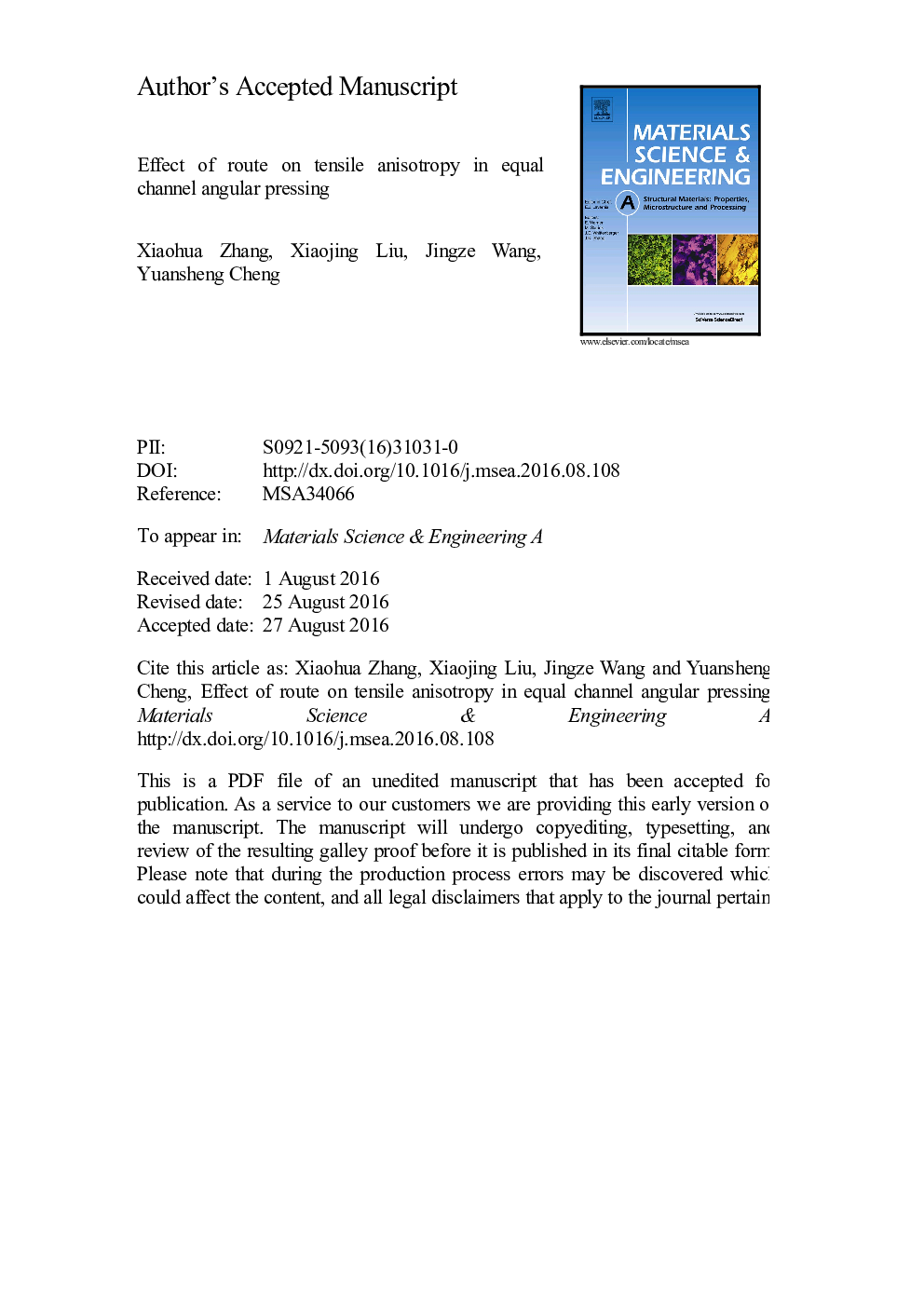| Article ID | Journal | Published Year | Pages | File Type |
|---|---|---|---|---|
| 1573005 | Materials Science and Engineering: A | 2016 | 17 Pages |
Abstract
Due to limitations in the billet dimension, the tensile anisotropy of billets processed by equal channel angular pressing (ECAP) are rarely reported. In this work, AZ91 magnesium alloy billets with a diameter of 60 mm were processed by 4 ECAP passes via route A, Ba, Bc and C. The tensile test was carried out to study anisotropy and the tensile samples were machined along 3 orthogonal directions: extrusion direction (ED), transverse direction (TD) and normal direction (ND). The crystal preferred orientation was measured via X-ray diffraction (XRD). The results showed that significant tensile anisotropy occurred for different samples. The yield strength in the TD direction was highest regardless of the sample type. The 4Bc sample had a yield strength and fracture elongation that was similar in the ED and ND directions, which attributed to the 50.5° intersection angle between the (0001) basal plane and the observation plane. The texture for 4A and 4C samples could be both expressed as(0001)[4Ì
1Ì
50], while their pole densities were different. For the 4Ba samples, varieties of textures were formed whose pole densities were almost the same-this is responsible for the astonishing 8.9% fracture elongation in the ED direction. The basal texture dominated the tensile deformation mechanism at room temperature of the AZ91 magnesium alloy. The microstructure was greatly refined to 5 µm by 4 passes ECAP from the above value of 100 µm; the β phase was not homogenously distributed for 4Ba, 4Bc and 4C samples.
Related Topics
Physical Sciences and Engineering
Materials Science
Materials Science (General)
Authors
Xiaohua Zhang, Xiaojing Liu, Jingze Wang, Yuansheng Cheng,
